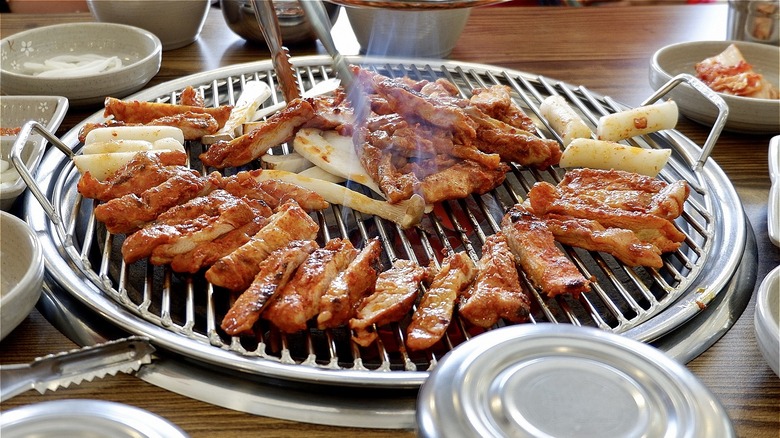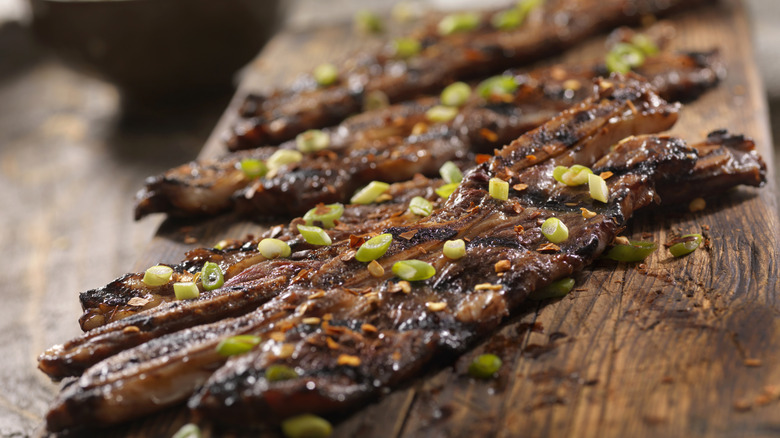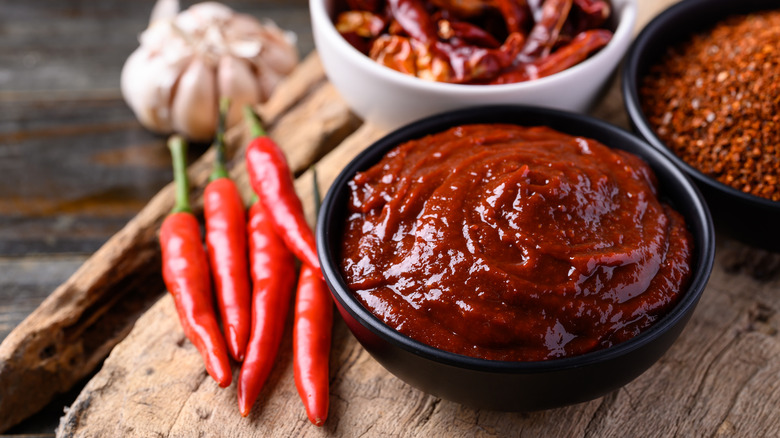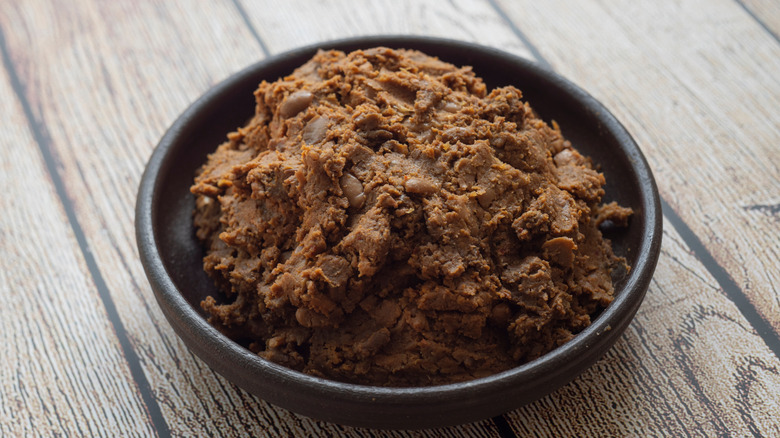Korean Barbecue Comes In More Flavors Than You Might Imagine
Korean barbecue is an all-encompassing term that describes the cut of meat, the way it is cooked, and the actual flavor of the finished dish. It is typically sweeter and spicier than American barbecue and is served communal style. Korean barbecue restaurants will often have a charcoal grill built into the middle of the dining room tables for the guests to cook their meat fresh. The taste comes in many variations, and the style of cooking has a long history.
Bulgogi is a common dish in Korean barbecue. The name derives from "bul", meaning fire, and "gogi", meaning meat. Bulgogi is thinly sliced cuts of marinated beef served in small chunks. The taste is wholly unique and is served with banchan (small side dishes) that are meant to be shared.
Other meats can also be used in Korean barbecue, including pork ribs, brisket, or chicken. Whichever meat is prepared, it is served in bite-sized chunks with small dishes of seasoned greens, candied sweet potatoes, eggs in soy sauce, or any combination of hundreds of different banchan. The idea behind Korean barbecue is similar to Japanese hibachi — the food is meant to be shared between people around the dining room table.
History of Korean barbecue
The history of Korean barbecue can be traced to the Goguryeo era (37 B.C.–A.D. 668), with a dish called Maekjeok. Maek referred to one of Korea's then-existing ethnic groups and jeok referred to the skewer that the bite-sized meat was served on. Since Korea was primarily an agricultural society, meat was scarce and wasn't served on a daily basis. That changed in the 20th century with the refrigeration and commercialization of beef.
As early versions of bulgogi grew in popularity, beef slaughtering became a booming business. But, due to Japanese occupation, there were oftentimes beef shortages and the industry faltered. Another important moment in the development of contemporary Korean barbecue was when the American military introduced commercial meat slicers to Korea during the 1950s conflict, which allowed for thinner slices of bulgogi. The thinner slices meant faster cooking times, which meant that restaurants were able to more quickly produce food. This appliance, coupled with the newly developed sugar factories needed for the sauce, allowed Korean barbecue to take a foothold that eventually found its way around the world and gave rise to its extant success.
Common ingredients in Korean barbecue sauce
Korean barbecue involves marinated meats that are cooked over an open flame. To achieve the signature, sweet taste, the primary ingredients of the marinade include soy sauce, gochujang, toasted sesame oil, Asan pear, ginger, brown sugar, and spices like garlic, salt, and pepper. The flavor is sweet and sticky, and the gochujang adds a spicy punch.
The soy sauce, sesame oil, and ginger lend the sauce a classic flair and the pear and brown sugar give the marinade its sweetness and stickiness. Gochujang is a Korean red pepper paste and is the backbone of many Korean dishes. Commercial barbecue sauces may opt to use ginger paste and concentrated pear flavor instead of fresh ingredients, but the sauce can be easily made at home with a whisk, saucepan, and a blender or food processor. If you can't find Asian pear at the supermarket, you can substitute with an Anjou pear or a red apple for the sweet component.
Since there are so many flavor variations of Korean barbecue sauce, the ingredients can be adjusted for personal preference. The flavor can be sweet, spicy, funky, or anywhere in between. Different profiles like umami do better with beef, but this doesn't mean it cannot be used with other cuts.
Different flavors of Korean barbeque
Korean barbecue's flavor comes from so much more than just the base ingredients of the marinade. Both the marinade and the cut of meat play a vital role in the overall flavor of the finished dish. Kalbi, or short beef ribs, adds a savory meatiness to any sauce but works especially well when plum juice, red wine, and onions are added to the marinade. Conversely, pork infuses sweetness from its fat.
The marinade for these meats can be as simple as sesame seed oil and salt, which enhances the smokiness of the meat and makes an appealing dipping sauce. Gochujang can also be added to kick up the heat. Ssamjang is another popular addition because it has an umami profile due to the inclusion of soybean paste and a touch of sweetness due to the honey included. It works well with galbi, which is a cut of pork.
Doenjang is a classic Korean barbecue sauce that adds an intense, umami flavor with a hint of sweetness. It's a fermented soybean paste with flavor notes similar to miso and is pungent. Doenjang is also a popular dipping sauce and the thickness of the sauce can be adjusted, which affects the flavor. These widely differing flavors mean that there is something for everyone in Korean barbecue.



